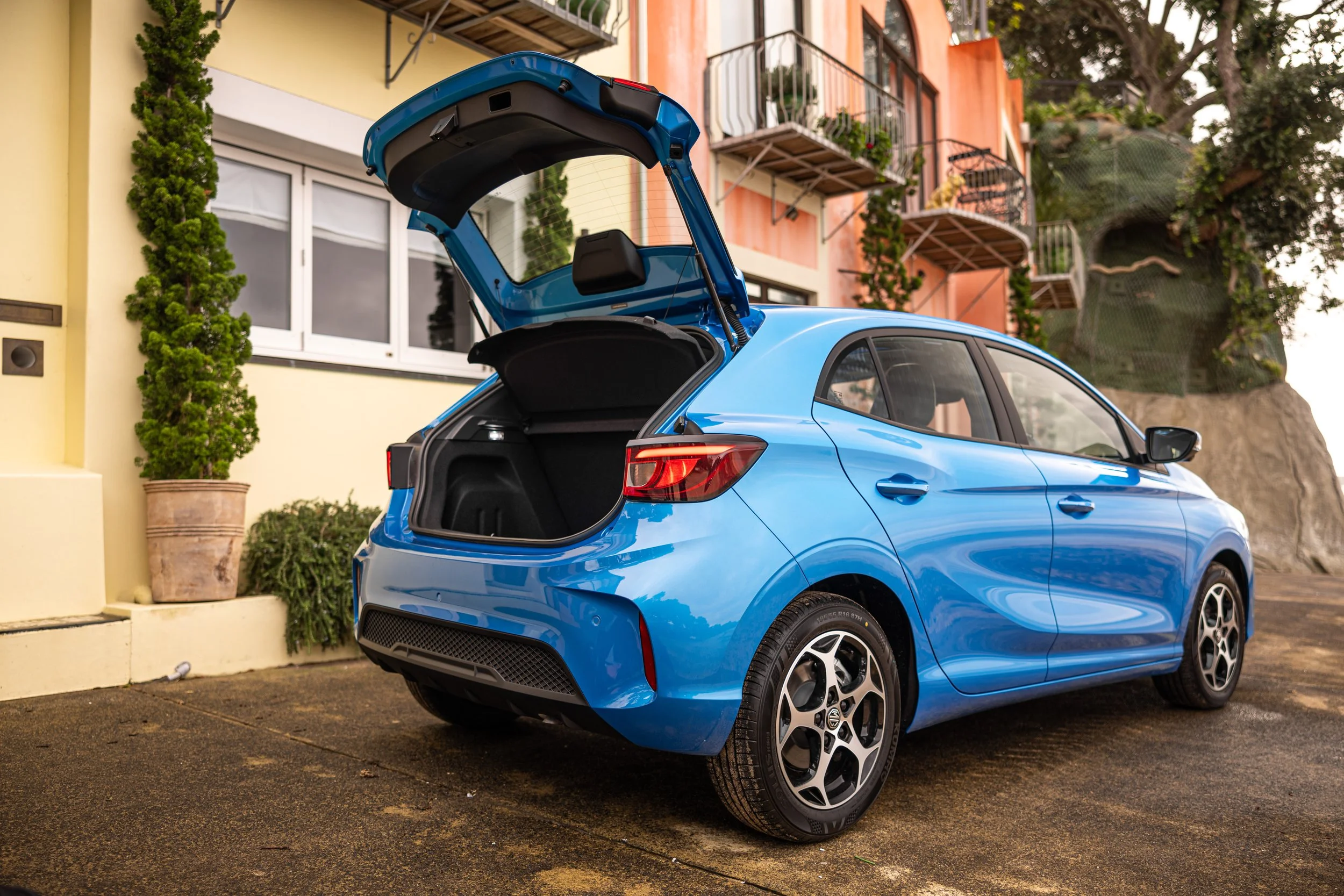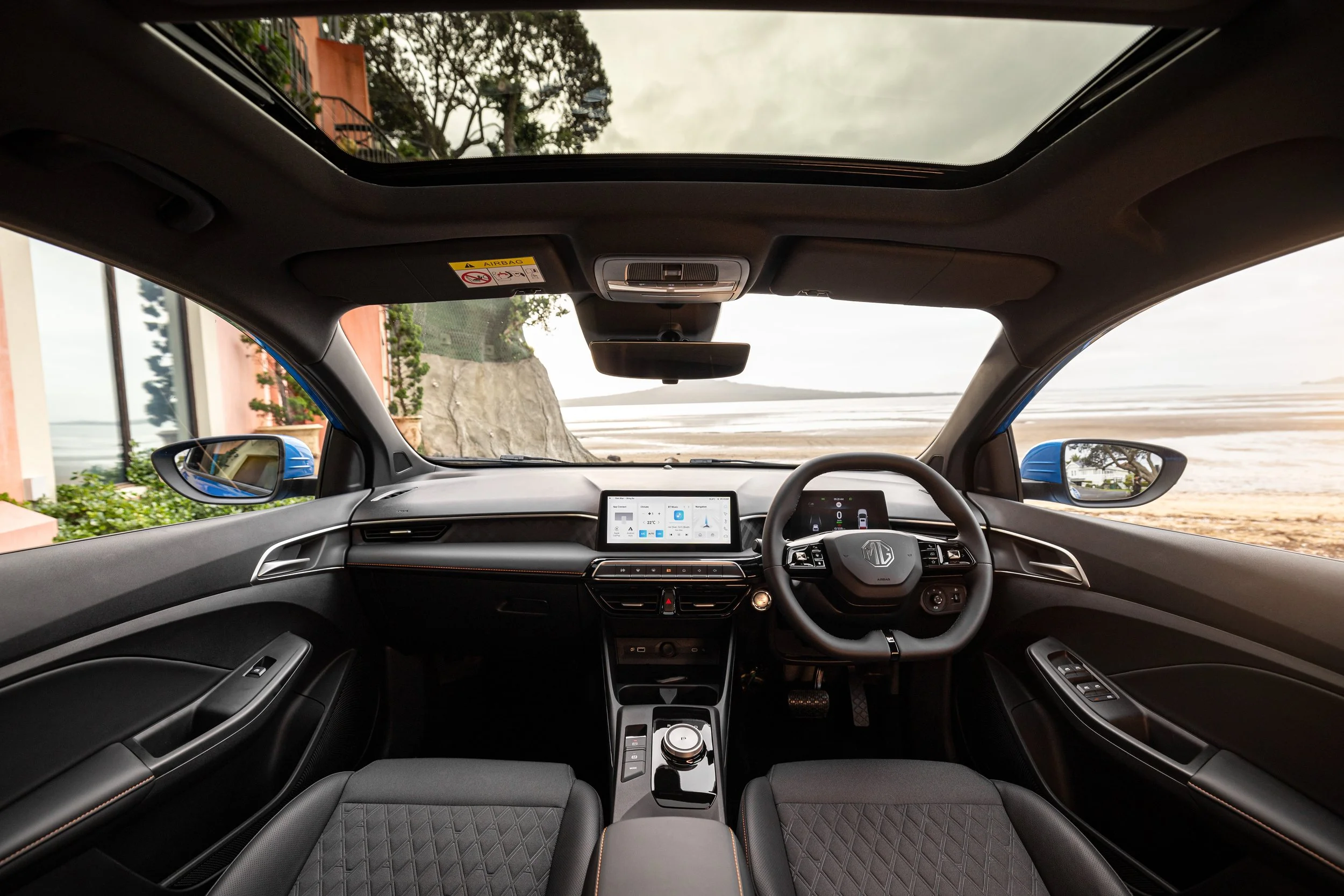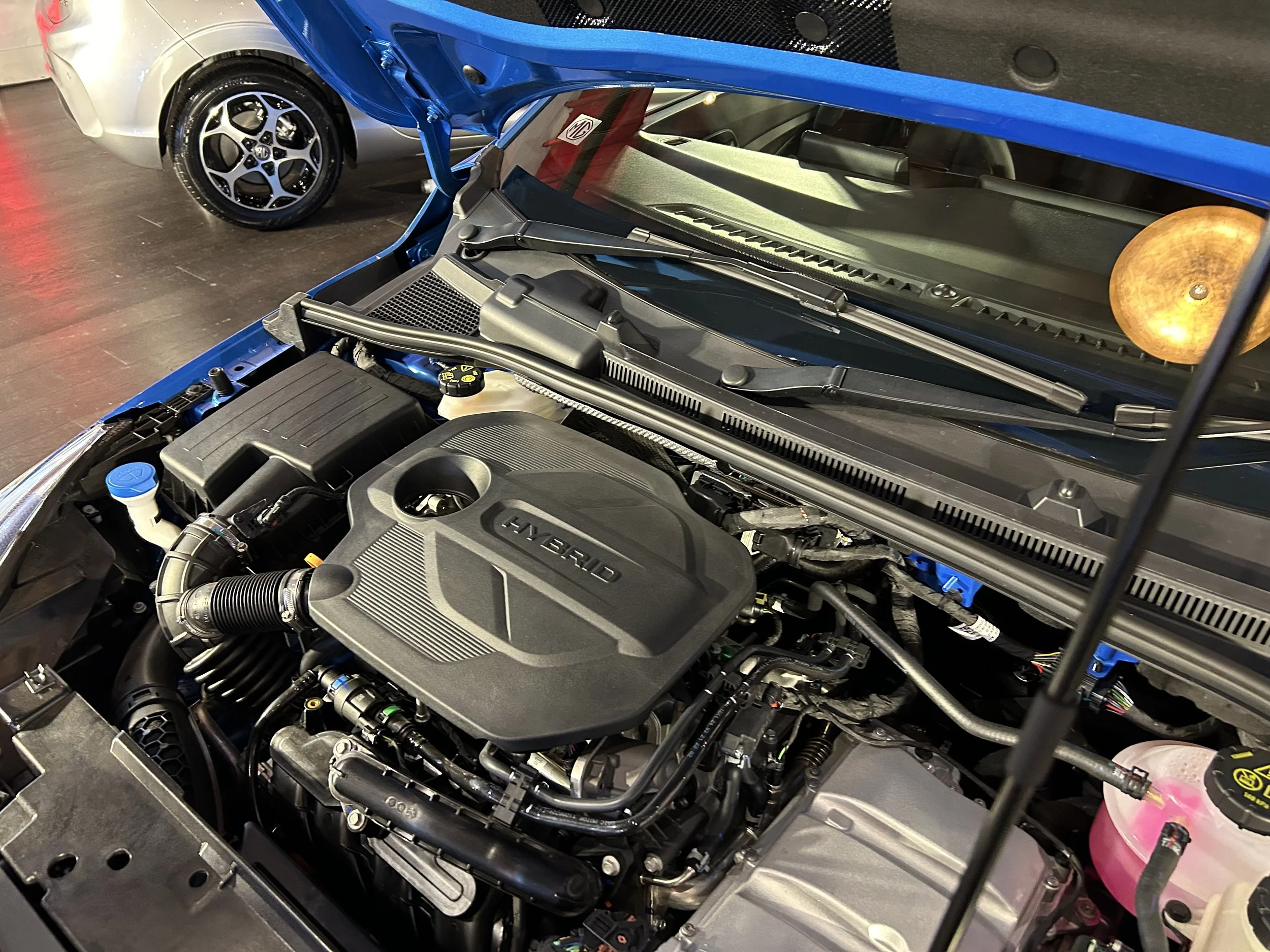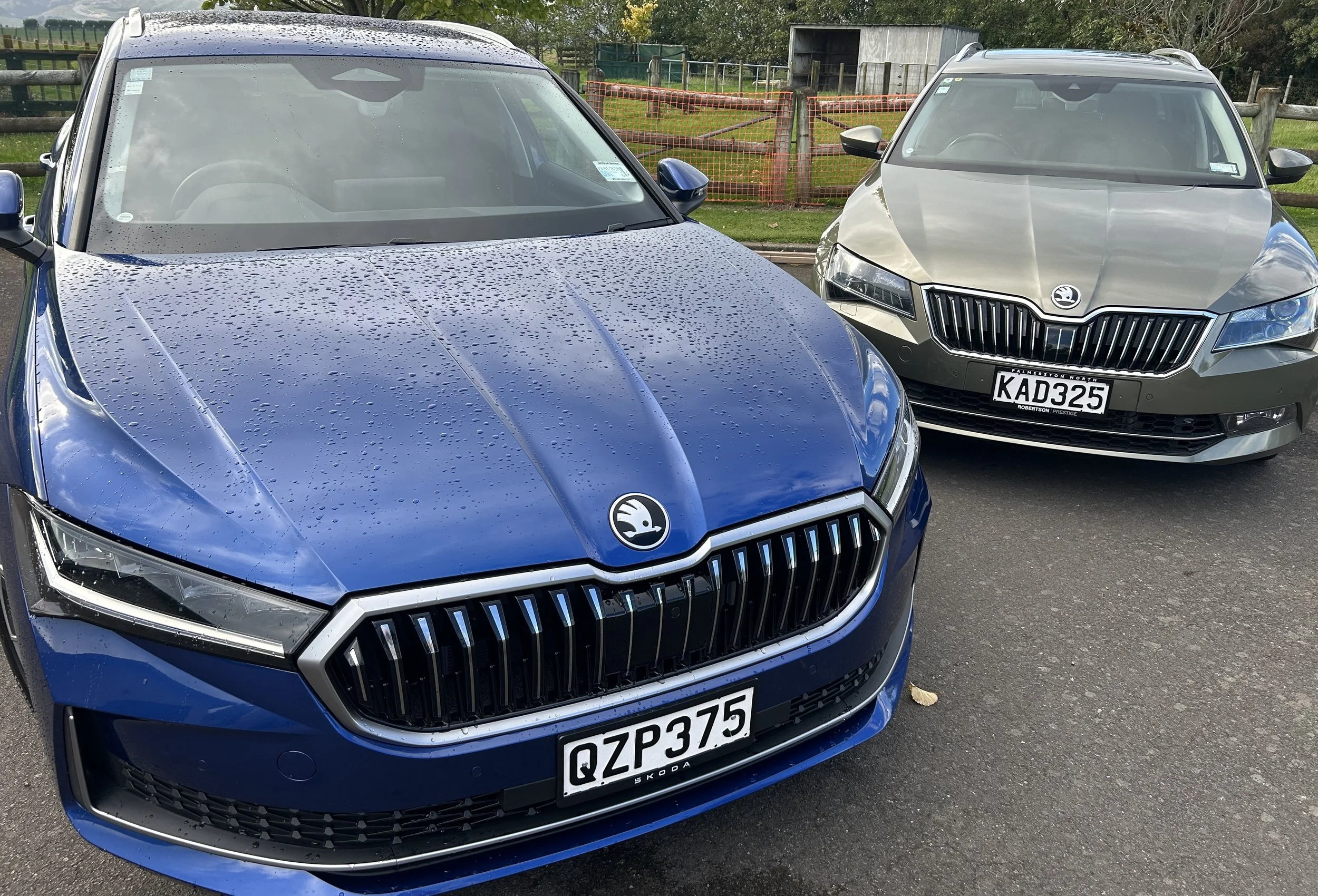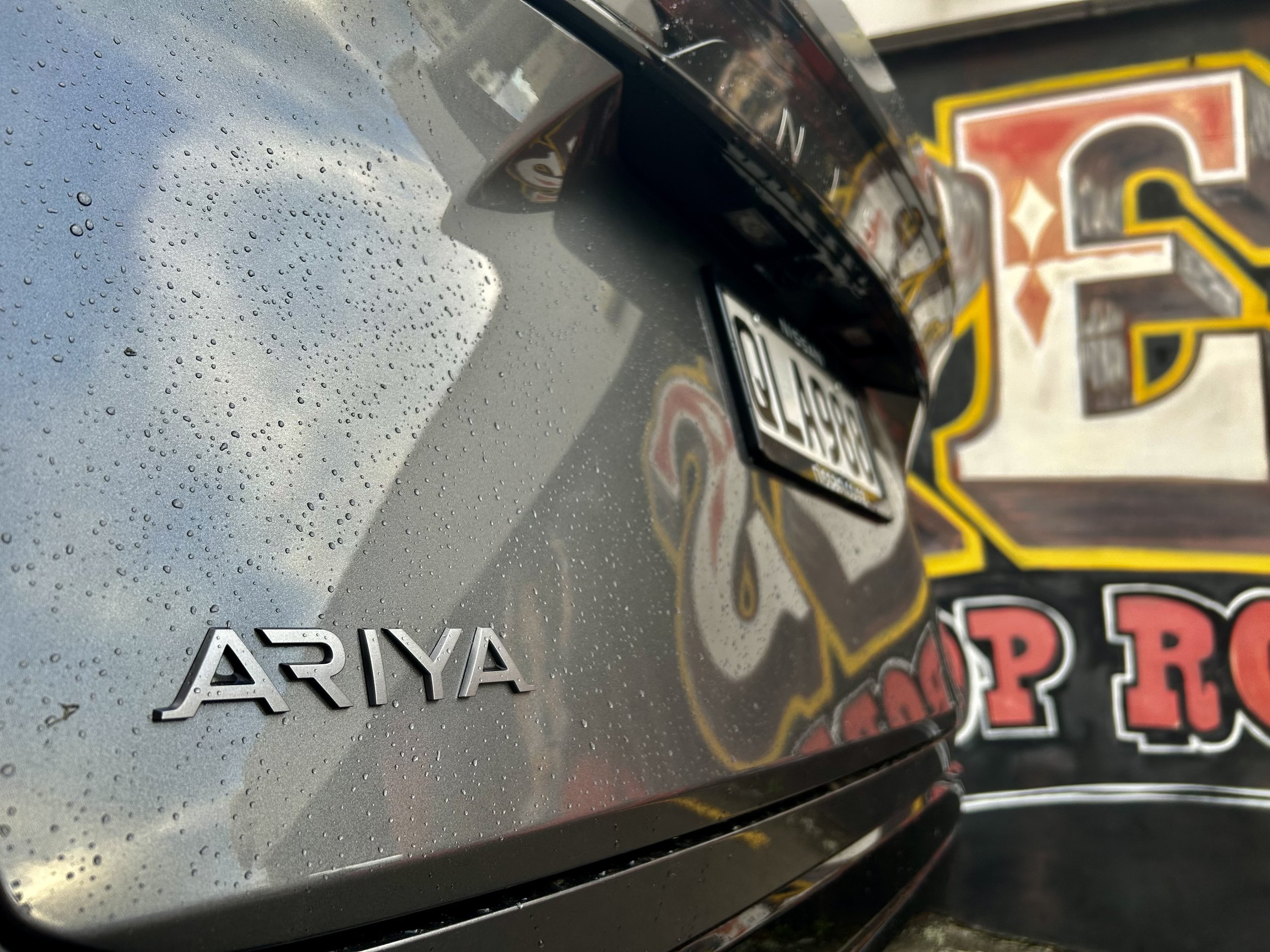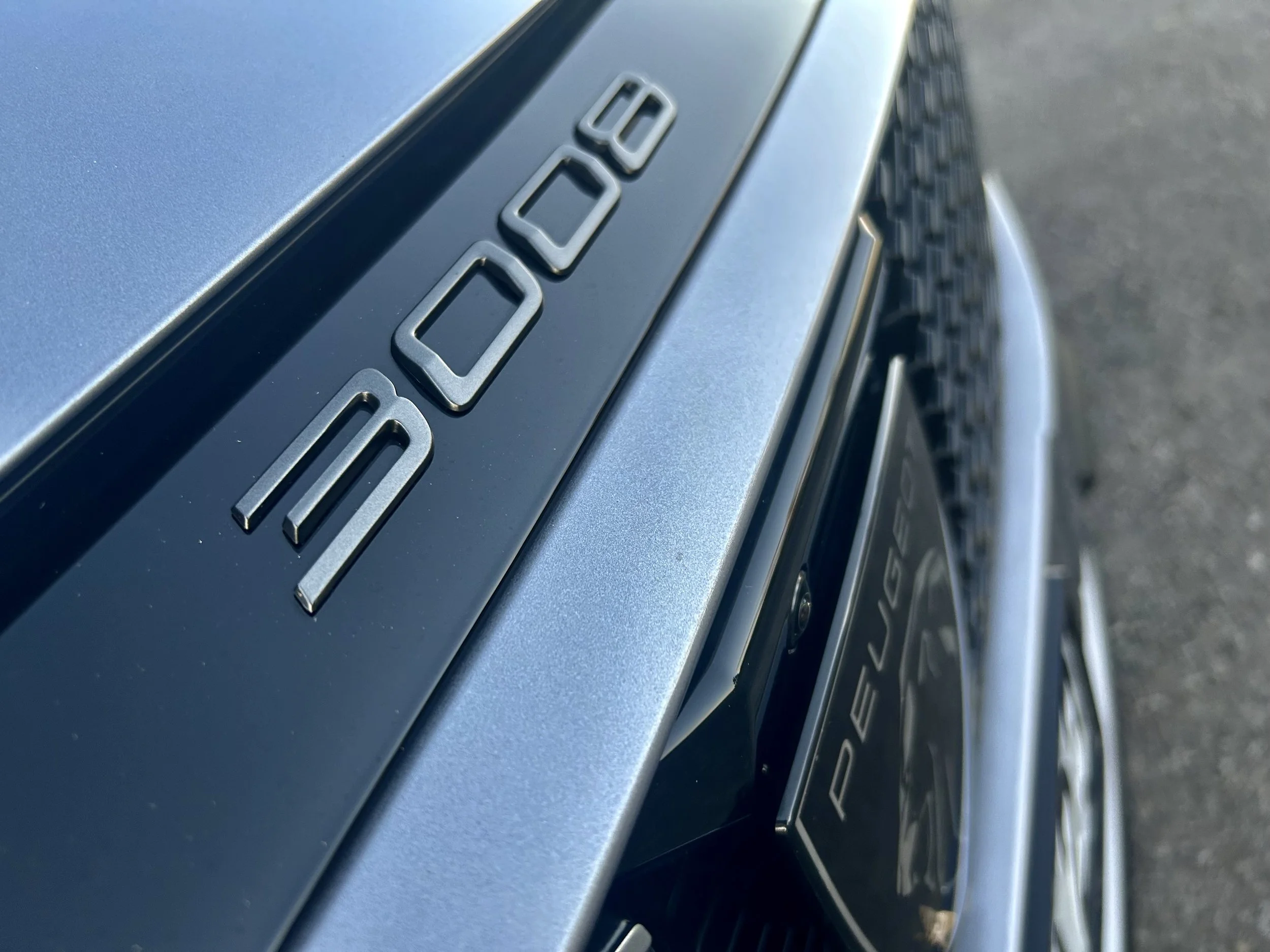MG MG3 Hybrid Plus first drive: Tech lift enhances budget buying appeal
/Adding electric assist makes the smallest petrol car from this SinoBrit brand more of a challenger to pricier category favourites.
PICKING the cheapest consideration among budget small cars will still see your buck stop at the MG3.
However, the buy-in now is bi-directional and looking like being better spending either way.
There’s a base choice that effectively becomes a modernised presentation of that previous car. You get more safety features, driver assists and comforts but seem set to reconcile with similar, modest performance. Even though the engine has updated in capacity, the outputs are but equivalent to the predecessor type’s. Is that progress? Debatable.
The true technology reach occurs with the ‘other’ version. One also building on a new ‘Modular Scalable’ platform and also availing across Excite and Essence equipment grades. But also one that’s a first for MG, being this make’s first non plug-in petrol/electric hybrid. So, a more advanced MG3 - and then some.
Both are more expensive than the old kind. Before lamenting that, keep in mind that the preceding model, unrelated aside from the common badge, was able to hold at $20,290 and $22,990 because it not only adhered very much to the ‘keep it simple’ ethos but was also extremely elderly.
Though only here since mid-2019, and achieving 2800 registrations since, it was in production for almost 12 years. You could tell. It was not without some usefulness, but overall fell well short of the standards expected to compete with the best in the supermini class.
The new direct replacement petrol beginning at $25,990, rising to $27,900 in Essence is a new positioning. The hybrid variants - identified as ‘Hybrid Plus’ - in the same trim but at $29,990 and $31,990 respectively, so a $4000 premium, all the more so.
Yet even the latter maintains a cost advantage for a petrol-electric; rivals closest in technology - the Toyota Yaris hybrid and Honda Jazz, respectively site at $32,490 GX/ $38,890 ZR and $36,700 in RS e:HEV.
The new Suzuki Swift hybrid is more directly priced, in spanning from $25,990 in manual to $29,990 in CVT-pure RSC, but it has a much milder system than MG’s.
Being of like capacity is the only commonality between MG’s new engines.
The 1.5 in normally-aspirated form is cleaner and less fuel hungry than the predecessor car’s now defunct 1.4-litre, but that could be influenced by it being an Otto cycle design and having now ended its marriage to a four-stage automatic, shacking up now with a constantly variable transmission. It’s 81kW is the same as before but it has less torque, the 142Nm maximum presenting a 8Nm decline.
It was not driven on the launch; the spotlight going to the hybrid, and understandably. It is altogether different, much more advanced, with a delayed ignition Atkinson cycle.
The 75kW petrol and 100kW electric motor work together to achieve an impressive 155kW. That’s a substantial figure, up there in hot-hatch territory,
Torque? MG here doesn’t give a figure, but media reports from the United Kingdom, which has had it for a while and was the first export market, cite 424Nm. If accurate, that’s also a lot for such a small car.
How does that translate on the road? Well, it’s not as GTi-like as you might imagine, but you can certainly feel the extra muscle. For instance, full from 80kmh is impressive.
Those outputs humble the opposition: The Swift’s three-cylinder 1.2-litre makes 61kW and 112Nm, the Yaris creates 85kW (67kW from the engine alone) and 120Nm and the Jazz e:HEV engine has 78kW/127Nm, though the electrics add up to 90kW/253Nm.
But that is not the complete story. As suits the market and buyer profile, the drivetrain is more about efficiency than urge, with engineering focus being on it delivering electric involvement as often as possible.
This is where it gets a bit more complex. Basically, the electric motor is backed by a separate generator motor producing electric power alone. The system charges its largest-in-class 1.83kW battery as the vehicle is being driven and by harvesting power from regeneration.
The battery gives enough juice to cover short distances at speeds of up to 80kmh with the engine off; just like the Yaris, but for faster and longer, MG suggests.
It can also be driven in Series mode – with the engine functioning as a generator – or as a parallel hybrid, where the two power sources work in tandem to give the full power output.
The powertrain’s operability and the outcomes it allows depends on which mode it is driven in; that also goes for the responses out of the transmission, a pinion, sun and ring gear arrangement running through the electric motor that affects three speeds.
From first exposure, it would be prudent to keep an eye on the various displays to highlight economy and electric involvement and it’s obvious Sport, while enhancing the car’s perkiness, is the least best enabler for optimal frugality.
As well as delivering a marked enhancement to step off, that mode also adds weight to the steering calibration. For city speed running, it does fine in Eco and, on the motorway, holds its own in Normal.
The transmission is a curiosity. CVTs are more common with hybrids, but MG reckons their way avoids lag to give the car more responsive acceleration. It cites a 0-100kmh time of eight seconds and says that makes it 1.2s faster than an unnamed rival - which from the data charts it presented almost certainly had to be the Yaris hybrid.
Insofar as efficiency goes? MG says the 3 will offer a combined 4.3 litres per 100km, a big step up on the old engine’s 6.7L/100km (and the new orthodox 1.5’s 6.0L/km). Our test run was wholly in Auckland, across urban, downtown and motorway sections and delivered an indicate 5.3L/100km. Good enough for a powertrain that also demands at least 95 octane, whereas the base unit will happily sup on 91?
The hybrid also cites vastly reduced CO2 emissions: 100 grams per kilometre is better by far than the base 1.5, on 139, though it also improves on the old 1.4, which rated at 159g.
Those results do not threaten the Japanese alternates. Yaris and Jazz hybrids lean down to 3L/100km and 3.8L/km, while Suzuki cites 4L/100km from the manual Swift and 4.3/4.7 from its CVT. CO2 counts range from 91-97g with the Swift to 71g for the Toyota and 68g with the Honda.
That it does not do better might seem odd, because in the speed range it would entertain in urban driving power comes mostly from its electric motor and it behaves more like an EV than most hybrids. Kick off is in electric, and feels that way.
It accelerates off the mark with the similarly instantaneous response of a fully battery-enabled car. Treat the throttle to a light touch and on flat roads you can get up to, and hold, it in electric drive. When the engine awakens, it generally does so with quietness and with little flaring; unless you are heavy-footed, which isn’t the way to a happy life. I found significant lag between mashing the throttle and the petrol engine and electric motor combination giving it its all.
The model’s dynamics were barely tested on the initial drive but improvement over the old model would be easily achieved; it was hardly a star in that regard. MG said its engineers in China and Europe collaborated to ensure the 3’s dynamics were fine-tuned for the requirements of various global markets and that as a result it “offers a refined drive but keeps MG’s ‘fun to drive’ ethos at its core”.
The car’s latest look is contemporary five-door hatchback, but more cohesive. Styling was the work of MG’s Shanghai studio and it picks up obvious influence from the brand’s current crop of crossovers and hatchbacks.
The front is characterised by a wide grille and feline style headlights while the sides have three angled highlight creases to impart a faster, leaning forward appearance. The pert rear has intriguingly-shaped taillights. It’s a more handsome car now.
At 4.1 metres in total length, it doesn’t threaten to stretch small car boundaries, but six centimetres are added to its length, with five of those coming in the wheelbase, and the body has widened by nearly seven centimetres – this complemented by a 4cm widening of the rear track. Height has reduced, by a mere 2mm. Dare you say you noticed.
The wheelbase stretch seems to free up leg room in both rows of seats but a more significant plus from the longer overall footprint is the increase in boot capacity at 298 litres. It has one of the largest boots in the supermini segment. A shame the rear seat back doesn’t split as in most other rivals. That’ll limit its versatility.
Time in the Essence hybrid reminded it is still a small car and, in particular, how much a sunroof, standard to this trim, can diminish headroom. It was a bit of compromised spot for this tall (1.8 metre) driver.
The cabin’s instrument layout strikes as an all-out departure from its predecessor, ushering in new ‘floating’ twin screens – a 7.0in digital instrument display and a 10.25in infotainment touchscreen – that feature new-look graphics and responsive activations. The squared off steering wheel has several control buttons for easier access to certain functions; the right-side toggle was a bit finicky.
As with the brand’s other cars, the MG3 aims to offer plenty for the money.
Standard kit starts with 16-inch alloy wheels, Apple CarPlay and Android Auto connectivity and six speaker audio. Also across all variants are that infotainment display, heated exterior mirrors, 7.0-inch driver’s cluster, button start, multi-function wheel, keyless entry, six speaker audio, multiple USB A and C plugs front and rear, single air conditioning, reverse camera, three top tethers, electric park brake and six air bags.
The Essence adds LED headlights, Poly Urethane (PU) faux leather, sunroof, rain sensing wipers, native sat nav and a 360-degree camera.
Interior hues including white and black over fabric, or leather. Seven exterior colours are available, some potentially at extra cost.
The Essence grade ushers in a new feature called the MG iSmart app that through a smartphone, enables doors to be lock or unlocked and to switch on the air conditioning or heater.
Cabin finish is where the MG still strikes as something of a budget buy; you’d call the choice of materials decent but not class leading.
With exception of the steering wheel and armrests, almost all surfaces, including some you will frequently touch, use hard, hollow-sounding plastic. As much as overall build quality seems good, some elements could prove flimsy; I’d worry about the sliding tray beneath the front centre armrest. The front seats seem comfortable enough, and the driving position is okay, though while it has a decent range of adjustment, there’s no reach adjustment for the steering wheel; a lapse in this day and age.
The previous MG3 had fallen behind expectation for safety ingredients and driver assists. The new remedies that with the type now picking up the MG Pilot system.
Whereas anti-lock brakes and electronic stability control were headline elements of the old, they’re bottom of the list items now.
Important improvements include forward collision and lane departure, monitoring of blind spots, rear cross traffic, tyre pressures and “unsteady driver”, and assistance features, spanning adaptive cruise, speed-limit notification, emergency lane keeping. These should help contribute to a much better crash-safety rating than the three-star NCAP score of the old model; fr now it lacks an ANCAP score but there’s talk a test is being arranged. MG has safety score sensitivity - another model about to come on sale here, the MG5 sedan, received a zero rating, the worst possible result, from ANCAP last year.
What percentage of sale will go to each drivetrain; which grade of those might be forecast as the most attractive?
MG’s people have steered clear of answering those questions beyond saying the market will decide. Likewise, there’s no volume forecast. Nor will the make’s representatives hedge on how much share of overall MG sales this model might achieve from now on. At present, the make’s top local seller is the ZS, a car on runout, with a new and more advanced replacement set to arrive before year-end.
Conceivably, the MG3 is in more of a sweet spot now.
Country manager Arek Zywot notes that while the new car market overall is not looking healthy at the moment, with electric and plug-in hybrids in a deep rut, conventional internal combustion engined cars are holding steady interest. And hybrids? They’re showing growth.
The MG3 now putting a foot in both those camps makes it the right car for this time, he contends.
The writer attended this event as a guest of the brand, with travel, a modest gift and food provided.


